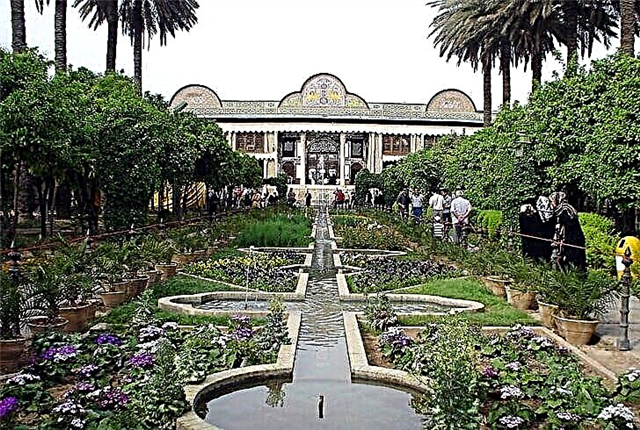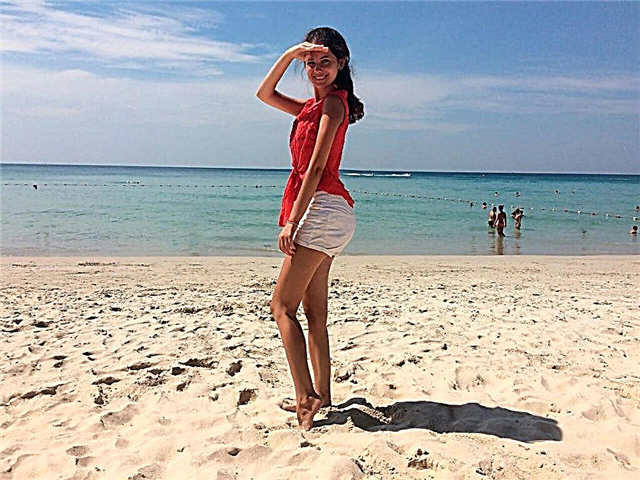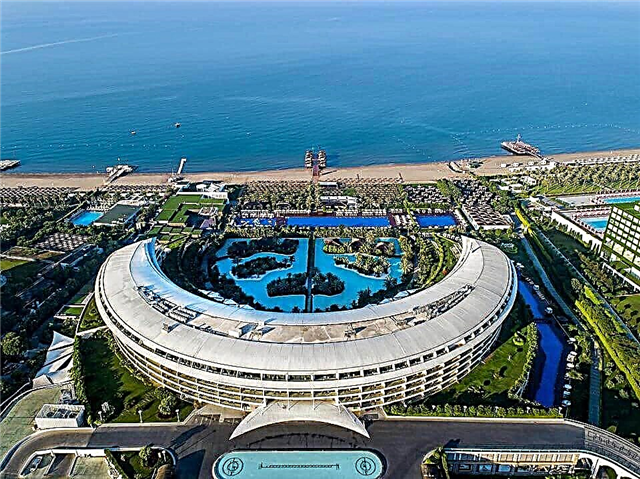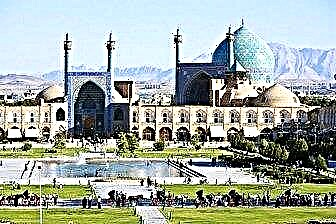Iran is the heir to the once great Empire of the Persians, one of the cradles of world civilization and a country with a history of more than 5000 thousand years. The tourism industry in Iran is booming, infrastructure deficiencies are being gradually eliminated, and new hotels are being built. The country has a huge potential for development, as travelers from all over the world have a huge interest in its architecture, history and well-preserved historical monuments.
A trip to Iran is an immersion in the unique atmosphere of ancient cities, where hundreds of years ago the followers of Zarathustra preached and ruled the shahs. This is a walk through the luxurious oriental bazaars of Isfahan and Shiraz, saturated with the aroma of saffron and cardamom. Finally, this is an acquaintance with the legacy of the greats Omar Khayyam, Ferdowsi and Ibn Sina.
In addition to sightseeing and acquaintance with history, Iran has good ski resorts - Dizin, Shamshak and Ab-e Ali. The slopes of the picturesque Mount Elburs are attractive for mountaineers and rock climbers, and the coast of the Caspian Sea - for nature lovers and fishing.

The best hotels and hotels at affordable prices.
from 500 rubles / day
What to see in Iran?
The most interesting and beautiful places, photos and a short description.
Imam Square
Located in the historical center of Isfahan city, it is included in the UNESCO heritage list. The square was laid by Shah Abbas I the Great in the 17th century. and before the victory of the Islamic revolution was called Shahskaya. The monumental architecture of the buildings surrounding the square is a testament to the power of the Safavid dynasty, which ruled Iran for hundreds of years.

Golestan Palace
One of the oldest monuments in Tehran, formerly part of the Citadel of Tehran. Previously, the palace was the residence of one of the noble Iranian families, now there is a museum with many rare exhibits and a library where valuable manuscripts are kept. The name of the building is translated as "palace of roses". It was built in the 16th century. during the reign of Tahmasp I and since then has been rebuilt many times.

Behistun inscription
An image with a cuneiform characteristic of the times of Mesopotamia, carved on the Behistun rock. The inscription was created by order of Tsar Darius I in the 6th century. BC. It depicts the triumph of the ruler over the rebellious princes. The letters are in three languages: Akkadian, Old Persian and Elamite.

Pasargadae
An ancient city, once the capital of Persia during the time of Cyrus II. Now only ruins remain of it. Translated from ancient Persian means "Persian gardens". On the territory of the city there is the tomb of the king, the ruins of royal palaces, the Toll-e-takht fortress. Pasargadae is recognized as the most valuable cultural monument during the reign of the Achaemenid dynasty.

Naqshe-Rustam
An area near the ancient capital of Persepolis, where the four royal tombs are located. Xerxes I, Darius I, Artaxerxes I, Darius II are buried here. During the campaign of Alexander the Great, the tombs were plundered and destroyed, in this form they have come down to our times. The name "Naqshe-Rustam" already refers to the Islamic period in the history of Iran.

Azadi Tower in Tehran
The structure was erected in 1971 in honor of the 2500th anniversary of the Persian Empire. It took over $ 6 million and 8,000 blocks of white marble to build. In 1979, after the victory of the Islamic Revolution, the monument was named "Freedom Tower". He began to symbolize the freedom of the Iranians from the Shah's rule. The picturesque Azadi is often referred to as the "Eiffel Tower of Tehran".

Haju Bridge in Isfahan
The bridge, built in the 17th century. under Shah Abbas II, the Great Silk Road passed through it. The structure consists of two rows of arches connected together, made in a typical Iranian architectural style. In the evenings, beautiful illumination turns on; locals and tourists like to walk along the bridge at this time and admire the surrounding landscapes.

Iranian National Museum
The largest museum in the country, which houses priceless monuments from the period of ancient Persia. The museum is divided into two buildings. The first one presents expositions of the pre-Islamic period, the second - the collections of the Islamic historical era. The museum was built in 1937 and became the first science museum in Iran.

Mausoleum Shah-Cherakh
It was erected in the XIV century. during the reign of Queen Tashi Khatun. The mausoleum contains the graves of brothers Ahmed and Mohammed, revered by local residents, who were persecuted by the shahs for their Muslim faith. The interior decoration of the building is made of mirrored mosaics, for which the Iranians called the Shah-Cherah “the mirror mosque”.

Jamkaran Mosque
One of the centers of Islamic science in Iran, a holy place associated with the name of the revered Imam Mahdi (it is believed that he prayed here). The mosque is a beautiful monumental building with "flying" minarets, a blue central dome and high arched gates. Jamkaran is visited annually by many Muslim pilgrims belonging to the Shiite branch of Islam.

Vank Cathedral
Christian temple in Isfahan. Belongs to the Armenian Apostolic Church. It was recognized by the Iranian authorities as a valuable cultural monument. The architectural style of the cathedral is a mixture of Muslim and Christian traditions. Despite the simplicity of the exterior decoration, the interior decoration of the temple is rich and splendid.

Ardashir palace
Another name for the structure is Atesh-Kadeh. Ruins of the residence of the first king of the Sassanid state. It is one of the few surviving architectural monuments of Iran of the II-III centuries. AD The palace is listed as a UNESCO heritage site on the proposal of the Iranian authorities. In ancient times, there was an artificial pond in front of the palace.

Saadabad palace
The palace complex of the early XX century, which includes various museums, pavilions, palaces. Initially, Saadabad was used as the residence of the Shah, now high-ranking guests from foreign countries are accommodated there. Not far from the weapons museum (part of the large museum complex) there are cannons cast in St. Petersburg.

Niavaran Palace
Previously, it was part of the Saadabad complex, but in 2000 it was allocated as an independent attraction. The main buildings were erected in the XX century. under the last Iranian Shah Mohammed Reza Pahlavi. Initially, Niavaran was planned to be used as a residence for foreign delegations, but later it became the residence of the Shah's family.

Fortress Arg-e Bam
An invaluable example of a Persian adobe building located on the Great Silk Road. The fortress is located in the town of Bam, it is a layering of styles from different eras - in the fortress there are mausoleums of the 12th century, a mosque of the 18th century, and watchtowers. After the earthquake in 2003, the structure was endangered.

Mount Tash-Kukh
Burning mountain in the province of Khuzestan. This is a unique phenomenon from the point of view of geology - thanks to natural gas and sulfur rising from the depths, an "eternal" fire burns on the surface. This spectacle attracts many tourists who gather in the evenings and admire the amazing natural phenomenon.

Lake Urmia
This body of water was once one of the largest salt lakes in the world, but over time it began to dry up. Over the past few decades, the amount of water has decreased by 90%, and the area has decreased to 2000 km². The saline shores of the lake are very picturesque, in the southern part there are many small islands, some of which grow pistachio groves.

Kish Island
Coral Island, the main and most visited resort in Iran. Here travelers will find magnificent sandy beaches, calm waters of the Persian Gulf and a rich underwater world. In the west of the island, you can admire the gigantic ship that ran aground, and in the north, the ruins of the ancient city of Harire.

Tabriz bazaar
The largest open market in the world and the oldest bazaar in the region. The territory of the bazaar is a full-fledged architectural complex with mosques, residential buildings, baths, galleries, caravanserais. It sells famous Iranian carpets, aromatic spices, jewelry, and antiques. This market has been known since the Safavid dynasty.

Garden of Eram
An outstanding example of Iranian garden art in Shiraz. This place, due to its beauty, attracts streams of foreigners who like to stroll along its picturesque alleys and relax in the shade of trees from the unbearable heat. "Eram" means "paradise", the locals call it "the Garden of Eden".












